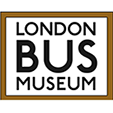|
The Titan
Announced in 1973, the Titan was intended by Leyland to be the UK’s standard double-deck bus and a replacement for various types inherited from its constituent companies such as the Atlantean, Daimler Fleetline and Bristol VR. The company needed orders from London Transport (LT), the country’s largest operator, and, to this end, LT’s engineers worked in close collaboration with Leyland throughout the development phase. The bus had many LT-influenced features such as power hydraulic brakes (developed from those on the Routemaster) and full air suspension. Ironically, the sophisticated specification of the bus and the consequent expense as well as maintenance implications, meant that very few orders were eventually received from non-London operators.
Leyland built a small number of Titan prototypes and nos. 4 and 5 operated in London for trial purposes in 1976-7. LT then placed an initial order for 50 Titans, subsequently increased to 250, and these were to be built at Park Royal Coachworks in north-west London, the firm which had built many of London’s RT family buses and all of the production Routemasters. Production started in 1978 but productivity at the factory was very poor and delivery was at a dribble’s pace. As a result, Park Royal was closed down the following year and the whole project might have come to an end then but for LT’s guarantee of sufficient orders to make a new production line worthwhile at Leyland’s Workington factory. Production re-commenced there in 1981 but, in the meantime, LT had diverted orders in favour of the rival Metrobus and, even with the new orders, the production line was closed in 1984, thus preventing LT from taking any more of the bus it had helped to design.
London’s first Titans finally entered service at Hornchurch garage in east London in December 1978 and eventually a total of 1125 was purchased new by LT (plus a few second-hand examples later). Alongside the MCW Metrobus (see the Museum’s M6), the Titan was one of two standard London double-deckers in the 1980s. It proved to be a reliable and popular bus which graced the streets of London for over 20 years although the type was largely withdrawn by 2001, a little earlier than the contemporary Metrobus. Many ex-London Titans were subsequently used successfully by other operators for many further years.
T23
T23 was delivered to London Transport in March 1979 and entered service in June of that year at Hornchurch garage in east London. One of the features of this and the other very early Titans was the provision of an Automatic Fare Collection (AFC) machine with a turnstile. Passengers could either pay the driver or use the self-service machine on the other side of a dividing rail. The AFC machines proved to be unsatisfactory and were soon removed, the resulting space being used to install additional seating for 2 persons.
T23 was to spend its whole London working life working local routes in the Romford area, passing to Stagecoach East London upon privatisation of London Buses in 1994. Withdrawn in 2001, it passed initially into private preservation before being resurrected for active service with two independent bus companies between 2005 and 2010. It was acquired by London Bus Museum in December 2011.
| Chassis: | Leyland Titan |
| Body: | Park Royal 68-seat, front-entrance, centre-exit |
| Engine: | Gardner 6LXB 177bhp with Leyland Hydracyclic gearbox |
| Vehicle Classification: | T, standing for Titan. These buses were originally to have been designated TN or TNS but this was reduced to ‘T’ for simplicity. |
| Date into service: | 1979 |
| Date of withdrawal: | 2001 |

